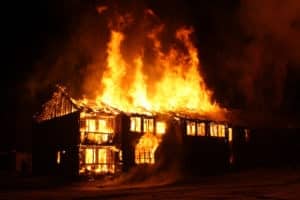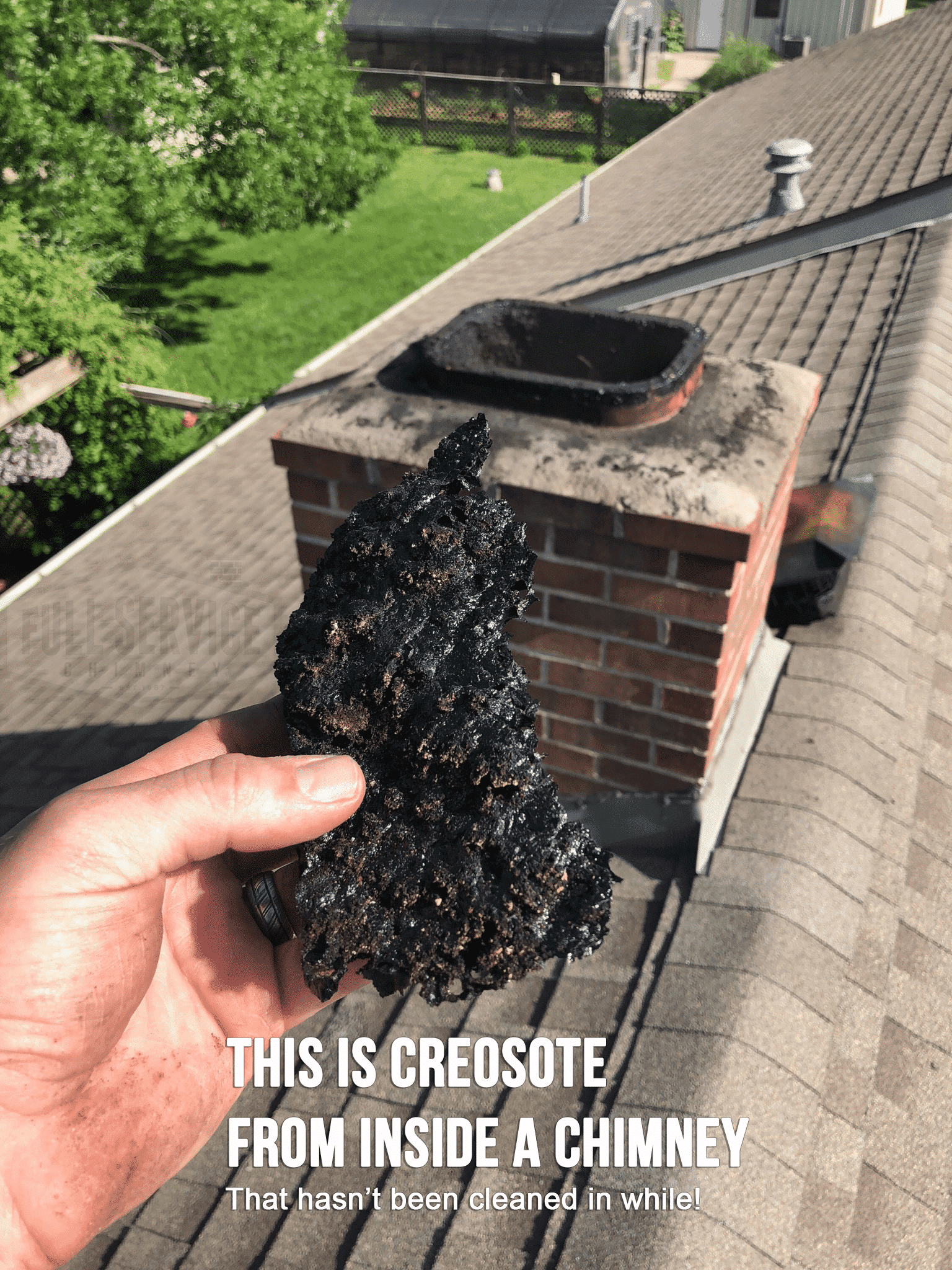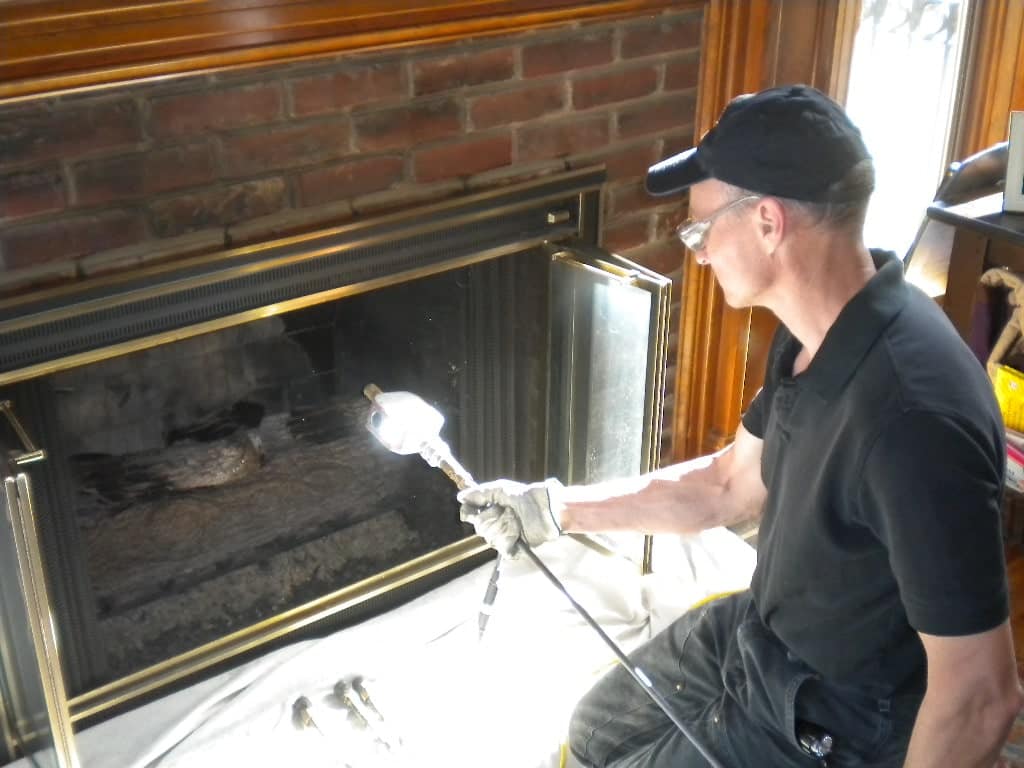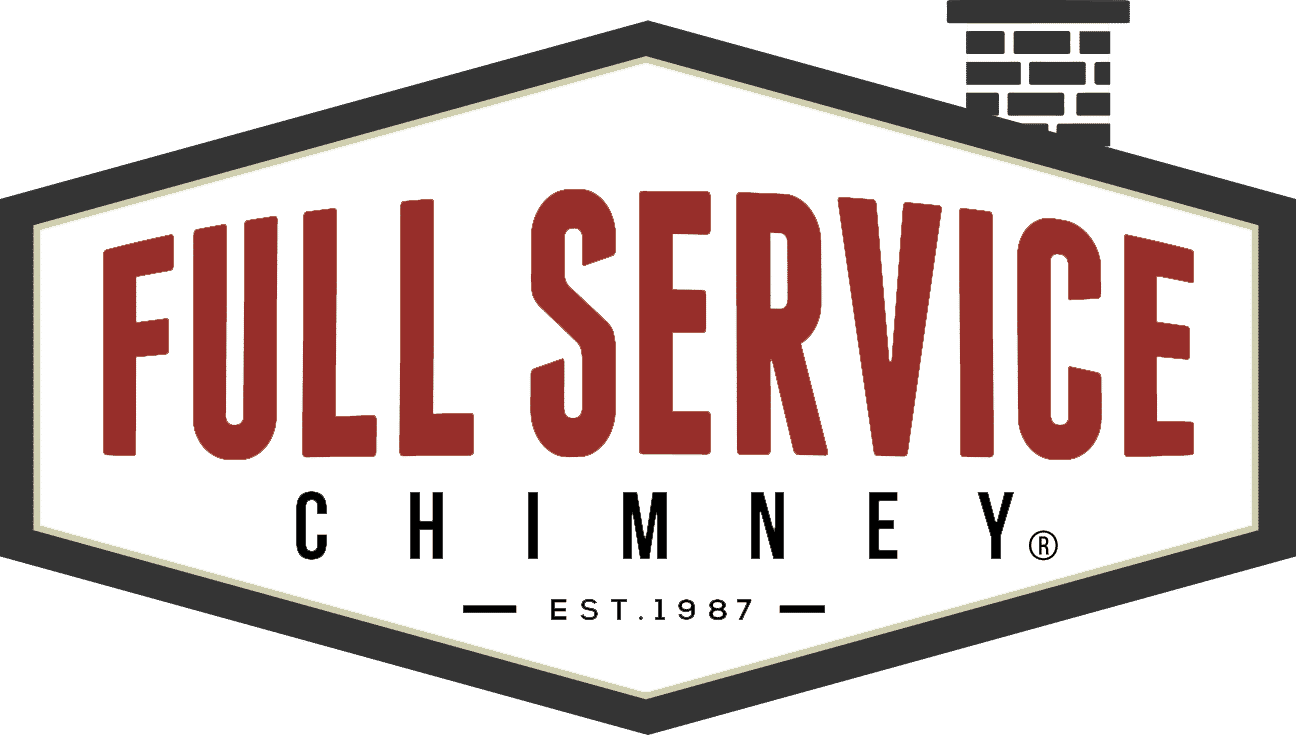If you have a fireplace, then you may be asking “Can Creosote Sweeping Logs really clean my chimney?”
Chimney sweeping logs can not clean your chimney, but they may have their place in your overall chimney maintenance schedule. Let’s look at how sweeping logs actually can help you and your chimney sweep.

Chimney fires are no joke. Chimneys that have wood burning stoves or fireplaces frequently have fireplace flue fires due to creosote build-up coating the flue tile liner. On occasion these fires in the chimney will find a way to catch the home on fire as well, but almost always these chimney fires damage or destroy chimneys and fireplace flues. This is why hearth lovers who enjoy wood burning are advised to have their chimneys cleaned every year in an effort to remove the creosote build-up and prevent a tragedy.
But what if you could burn a special log in your firebox and your creosote problems would magically go away?
To understand the realistic expectations of Creosote sweeping logs, let’s get some background information.
How Does Creosote Get in My Chimney?
Creosote in the chimney is a hard, smooth or crusty coating on flue tiles. It is made up of organic compounds found naturally in firewood. These compounds could have burned in the fireplace while the firewood was burning, but because of the haphazard nature of burning firewood, creosote leaves the firebox without actually burning up.
Most of the creosote leaves the fireplace and chimney in the form of smoke, but enough of it coats the inside of the flue and over time build up to a dangerous amount. This is why the CSIA recommends a chimney get serviced every year or more often, when there is a 1/8 inch of soot or creosote built up. The concern is not only fire prevention but due to the acidic nature of soot, tar and creosote, deposits that are allowed to remain and damage to the flue of the chimney.

How Do Chimney Sweeping Logs Work?
Creosote like any compound can be softened or otherwise loosen if enough of a reactive chemical comes in contact with it. The chimney sweep logs have these cleaning chemicals and as they burn, most of the chemicals go up and out of the flue, but some attaches to the creosote and begins to loosen it.
If burned at prescribed intervals, the creosote cleaning logs have the ability to keep creosote from forming it hard “third stage” or glazed hard coating. This is actually a benefit, not because these chimney sweeping logs replace a Certified Chimney Sweep, but because if the tar and creosote are “pre-loosened” it makes the chimney sweeps job easier and more effective.
For Fire Safety, You Must Hire a Chimney Sweep
Some folks are disappointed that a $15 log doesn’t replace a visit from a chimney technician, but consider, a Chimney Sweeps job isn’t simply cleaning the flue of the fireplace. Chimney sweeps, certified by the CSIA clean, inspect and repair chimneys, because after all, chimneys wear out like other parts of your home.
The safety your chimney provides require annual maintenance, of which sweeping is only part. Your annual visit from the chimney sweep should include inspection of the chimney cap (keeping animals out?) the crown, brickwork, flashing and flue liner. Inside the fireplace, attention is given to the smoke chamber, damper and firebox. And finally your chimney sweep must examine your gas chimney flue to ensure the furnace and water heater is safely venting any carbon monoxide to the out doors.
When you think of all a Certified Chimney Sweep does on a visit to your home, is it like they could be replaced by a 15 dollar log?

Is a Chimney Cleaning Log Worthless
No, not by a long shot. Rather it is part of a plan to reduce the opportunity for a chimney fire. Home owners work with their chimney sweep to maximize their enjoyment of their hearth, while minimizing hazards.
Creosote and soot build up can be minimized by:
1. Burning good wood
2. Operating your fireplace or wood burning stove properly and
3. Using the creosote sweeping log every few dozen fires, to prepare the chimney for its annual cleaning.
The CSIA, gave their Accepted Product Status to the creosote sweeping log, they believe homeowners can rest assured that it is a effective product, that is, if it is a part of a chimney safety and maintenance schedule. The use of cleaning logs is in the big picture of a chimney safety plan.
Additional Resources:
If you’re looking for Ways to Improve Fire Safety in the Workplace check out this post.

